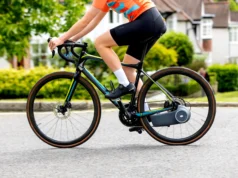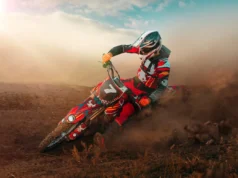More and more women are using their bikes for transportation and sport, but there aren’t many good bikes for women just yet. There are several reasons for this: women’s bikes are made to look like men’s bikes, women’s frames are made of different materials, there aren’t many designs or accessories for women’s bikes, and women’s bikes are often designed for high performance but women don’t want it that way. So let’s take a look at some different ways women can get the biking experience they want from their bikes.
A bicycle is a machine that is meant to carry you places, and the bike industry is continually striving to make the bikes we buy both more comfortable and more stylish, to help us make those longer trips.
To design the perfect women’s bike, you really have to have a broad view of the bike industry and the female audience. Many of the issues to consider are related to the way women ride, and the prevailing attitudes and perceptions of women in the bike industry. Just because a women is riding a bike doesn’t mean she is riding a bike – she could be having a coffee or a walk with her dog. The bike has to fit the woman, not the other way round.. Read more about women’s specific road bike and let us know what you think.
If you’re looking for a bicycle as a woman, chances are you’ve seen or perhaps looked for a women’s bike.
Brands, shops, publications, and websites often use the phrase “women’s-specific bike,” but you may be shocked to learn that there is no common definition of what a women’s bike is, apart from one that is marketed toward women.
What distinguishes a bike as women’s-specific – the characteristics or aspects that make it better for a woman rider than a unisex bike – has changed through time and continues to do so.
More women riding means more data about female cyclists may be gathered, studied, and used to improve bike design. With more women working in the bike business, there will be a greater knowledge of what women want and need.

The selection of women’s bikes is much greater than it used to be, and it is always growing and expanding. Phil Hall is a well-known figure in the
Bike design evolves throughout time as new technologies, materials, riding styles, and data become accessible. Each manufacturer will have its own design philosophy, resulting in a wide range of variations in bike types, size, geometry, and more.
It’s similar to purchasing jeans: a size medium in one brand may not fit the same as a medium in another, and the cut, fabric, and features may vary. It’s all about figuring out what works best for you.
Brands have attempted a variety of methods to appeal to the increasing female cycling market, with mixed results. We’ve broken down some of the most common methods used by various companies and asked the brands for their thoughts.
One or both of the following components are present in the majority of the many approaches:
- Women’s finishing equipment or contact points include smaller handlebars, shorter brake levers, shorter/size-specific cranks, and a seat that is intended to fit with a woman’s genitalia.
- Geometry tailored to women’s needs. To meet the requirements of women, the geometry of the frame is built differently from that of a brand’s comparable men’s/unisex bike.
We’ve also added a couple earlier methods that are no longer used but are often misattributed to contemporary women’s bike design.
1. Make it smaller and pink.
Thankfully no longer in use, this evocative phrase relates to a strategy used in the early days of women’s bike design.
Women must be like males (two legs, two arms, body), but they are generally smaller and lighter, and they prefer pink and flowers, according to the reasoning. As a result, most women’s bicycles were just scaled-down copies of men’s bicycles with ‘feminine’ embellishments.
There was typically less variety, lower-quality components for the same price (a.k.a. a “pink” tax), and it came off as a perfunctory attempt in some instances.
It’s also had a lasting negative legacy, with a lot of women understandably guarded about what can seem like a marketing ploy to sell different/lesser-quality bikes to women. Although, thankfully, that isn’t the reality any more. On the flip side, it marked the first time the bike brands started to think about the women’s market and what women might want from a bike.
2. High and short
Things became a bit more complex as time passed. More study on women’s body forms (or’body geometry’) was conducted, and it seemed that the typical woman had longer legs and a shorter torso than the average male. As a consequence, women’s bikes have a shorter reach, a lower frame standover, and a more upright riding posture.
The problem is that, although this is excellent for certain kinds of riding and feels great when you’re just starting out, it may impair how a bike handles when you’re riding at a higher level and, as a result, can stifle development.

Women’s bikes have a low standover, which has now become the norm for most mountain bikes of both genders. Liv/Giant
There are a few exceptions, however: the low standover seen on women’s bikes has now become the norm for most mountain bikes of both genders.
This simplistic approach is no longer prevalent. Women’s-specific bike geometry has grown more complex and targeted as more data on women bike riders became accessible. As a consequence, more time and expertise was spent catering to the market, and women’s-specific bike geometry has become more sophisticated and focused.
3. Unisex frame with a women’s finish package
Some manufacturers – in fact, most bike makers – believe that the differences between men and women are no longer substantial enough to justify a frame design difference, and instead concentrate on the finishing equipment.
They may provide a women’s comparable model of a certain bike with many of the same components as the men’s version, but with size-specific finishing kit and a women’s saddle, or they may offer the bikes as a distinct brand, like Juliana Bicycles does.

A stunning ride that serves as the ideal crossover bike for the undecided roadie/gravelista. Immediate Media / Robert Smith
Kelli Emmett, Juliana’s sports marketing coordinator and a competitive mountain bike racer, claims Juliana’s bike design is similar to Santa Cruz bikes.
“We think Santa Cruz does an excellent job creating high-performance bikes, and its geometry naturally supports a lower standover height in all sizes,” says the company. We don’t think that women need their own unique geometry, but it doesn’t mean that other companies who do so are doing anything wrong.
“We think women are constructed similarly to males, except they are lighter and shorter. We provide a specialized shock tuning for smaller weight riders, as well as an XS [frame] size, to make it feel more responsive and comfortable while running lower air pressures.”

The Juliana is nimble and a blast to ride on any terrain Steve Behr / Immediate Media
Juliana’s bikes also feature female-specific touch areas, such as a smaller seat and grips.
The next issue for Juliana Bicycles is, of course, why its bikes are sold under a different name than Santa Cruz if women’s geometry isn’t required.
Emmett says, “Juliana is just a tool to let ladies enjoy the finest of mountain riding.” “Our primary aim is to make our sport more accessible to anybody who identifies as a woman. It’s a tiny portion of our riding community, but it’s increasing – especially as more people find trail riding during the pandemic.”
“Juliana thinks it is critical to have women in the limelight, front and center, since they must be seen, promoted, and heard in order to attract more women to the sport. Juliana champions females in the media, advertising, the workplace, and on the racetrack.”

Santa Cruz, Juliana Furtado CC X01.
Juliana focuses on engaging and developing grassroots networks, supporting ambassadors, and organizing events in addition to sponsoring professional athletes.
It’s worth noting, though, that not all manufacturers take the same approach to the “unisex frame, women’s-specific finishing kit.” Women’s bikes are usually found in the main range of most manufacturers, and are identified by a suffix such as WMN, WSD, or simply adding “women’s” to the product name.
There’s also the possibility that the kind of bike you ride has an impact. Mountain bikes are usually only available in three or four sizes, and the riding style is generally very dynamic, with descents that require the rider to stand up on the bike.
On the other hand, since road riding requires maintaining a relatively similar body posture for long periods of time and small modifications in fit may have a big cumulative effect, women’s-specific frame geometry may have a greater influence on road bike design.
4. A full-fledged women’s-only design
This is a bike that has been specifically developed for women, including the frame geometry, components, and construction kit. There aren’t many companies in this area right now; Canyon makes several important road and mountain bikes in this manner, such as the Spectral WMN and Endurace WMN, but Liv Cycling is by far the most prominent.
Liv is a sister company of Juliana, and it was founded by Bonnie Tu, Giant Bicycles’ CFO. Giant Bicycles produces Liv frames, but that’s where the similarities stop.

Women’s mountain bike Liv Tempt. Liv
Brook Hopper, Liv’s global marketing manager and a former cross-country runner, says, “Liv is a female-founded and women-led company that exists to celebrate women, and we put women first in all we do.”
“Liv is the only complete bike company that designs and builds bikes for women from the ground up, and our bikes cover a wide range of sports.
“Like other bike manufacturers, we have a “secret formula” for bike geometry and design that we put to the test.”
Liv exclusively utilizes women’s body measurement data when constructing bikes, according to Hopper, and this guarantees that the bikes fit more women straight out of the box.

Liv Avail Advanced Pro 1 2023 Liv Avail Advanced Pro 1 2023 Liv Avail Advanced Pro 1 2023 Damian Rosso is a writer, musician, and actor.
“Walking into a shop and just having one “unisex” choice for clothing, underwear, trousers, shoes… all things we select depending on how comfortable and confident we feel in them would seem very odd to me,” she adds. “And we all know that ‘unisex’ implies ‘men’s,’ right? And “one size fits all” really refers to “one size fits males.”
Liv focuses on conveying a strong message of community and inclusiveness in addition to bike design. “What matters most is our brand objective of putting more women and girls on bikes, and we think that by giving women more options while also providing them with more possibilities, we will be closer to accomplishing this,” Hopper adds.
This method raises an obvious issue. Isn’t it reasonable to assume that if Liv and other comparable companies believe it helps women, then it is reasonable to assume that all women would benefit from utilizing women’s-specific bikes?

A 165mm head tube provides a more upright, less aggressive riding posture that is more pleasant over long distances. Immediate Media / Robert Smith
“We recognize that not all women are made the same, and we would never recommend that all women ride a women’s-only bike,” Hopper adds. “You’ll never hear me say that one bike is ‘right’ and another is ‘wrong.’
“In terms of our strategy, Liv thinks that giving women more choices and alternatives is better, period. It’s also critical for any business to speak directly to the individuals it’s aiming to reach, so we tailor our message specifically for women, which may be challenging given the male-dominated nature of the cycling industry and sport.”
5. Authentic unisex
You’ve probably heard of the phrase “gender data gap.” If not, it’s the observation that there is a lack of data from women in most of the constructed world, which includes equipment, clothes, transportation, medicine, and, of course, bicycles.
This manifests itself in a variety of ways, some minor and inconvenient, such as the lack of pockets on women’s clothing, and others major and dangerous, such as ‘unisex’ protective equipment that does not fit properly and thus does not protect; drug trials that do not account for the effect of female hormones on efficacy; or car design that does not account for smaller drivers and how this affects the periphery.

When it comes to unisex bikes, Specialized takes a unique approach. Immediate Media / Robert Smith
Although all of these factors are clearly more important than whether or not a bike is enjoyable to ride, the same unconscious bias may still exist in bike design. So, apart from the brand’s declaration, what makes a unisex bike really unisex?
Specialized is one company that takes a different strategy, or at least has been more outspoken about it. Specialized no longer produces women’s bikes as a norm, although it does take into account a considerable quantity of body dimension data from female riders when developing its unisex design approach.

In 2023, the number of women recording rides on Strava increased dramatically. Immediate Media / Simon Bromley
“Our fundamental principle is ‘Focus on the rider’s demand for a technically sophisticated product that improves performance,’” says Stewart Thompson, Specialized’s road and gravel category head and former product development.
“Whether it’s suspension kinematics, fit geometry, or new features like SWAT [Specialized’s on-bike storage solutions], this is at the heart of everything we do, including bike design.”
Specialized owns Retul, a major bike fitting business, and therefore has access to a massive quantity of rider data that includes not only the rider’s morphology and gender, but also their riding style, fit preferences, kit preferences, and more.
According to Specialized, all of the anonymized data is then sent back into the system for analysis and product creation.

Getting a saddle fit, according to Specialized, is one of the most essential things you can do to enhance your on-bike comfort. Immediate Media / Phil Hall
“We’ve found that there is likely greater variation between two male riders than a man and a female cyclist when it comes to body proportions and fit geometry,” Thompson adds.
“The greatest quantifiable difference between men and women has been in the breadth of their sit bones and the width and form of their saddles. One of the most essential things a cyclist can do to enhance their riding experience is to have a professional bike fit.
According to Thompson, Specialized’s attitude is simple: “Don’t create a difference where there isn’t one.”
“When there is, we spend significantly in research and development,” he adds. Only when there is evidence to back the choice and a genuine performance advantage will we develop male- or female-specific products.”
It doesn’t end there…
Bike design changes all the time as new materials and methods become accessible, new riding styles become popular, and new technology becomes available.
Women still make up a lower proportion of the riding community, but that number is gradually increasing, which means more data gathering, product testing, and real-world rider experience and input will be available. This will influence the future generation of bikes and goods, whether or not they are designed specifically for women.
So, do women need bikes designed specifically for them?
For a more comprehensive explanation, see our post on whether you need a women’s bike, but the simple answer is yes. Certainly not.
Some women benefit from women’s-specific bike geometry, and many women benefit from women’s-specific contact points and suspension tuning, but many women feel that the unisex bikes on the market are just enough.
The most essential thing that most companies agree on is that having a decent product that performs well, isn’t subpar in any way, and offers women a lot of options so they can choose the bike that meets their requirements is critical.
Hello again, from the Change Cycling Now blog. As you may know, we’re big fans of Australian road bike design, and we’re big fans of Australian bike design. We’re also big fans of expert advice, so today we’re going to be using the expertise of four Australian bike designers–Jilleanna Fleischer, Vanessa Cawthorne, Susannah Bragg and Lindsay Gray–to write up the best tips for designing a bike for women.. Read more about why are there male and female bikes and let us know what you think.
Related Tags
This article broadly covered the following related topics:
- unisex bikes
- ladies bike frame
- buying a women’s bike
- women’s specific road bike
- do i need a women’s bike






